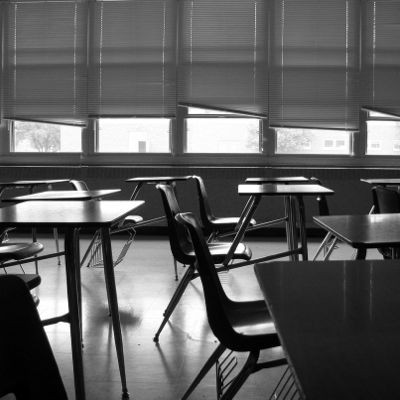Portland School Board To Present Redistricting Plan Later This Month
Wednesday, October 14, 2015
The Portland School Board will unveil its preliminary plan for redistricting at its meeting later this month.
The School Board is considering redistricting in order to deal with an influx of new students. Projections have school populations totaling 53,000 students by 2025, an increase of more than 5,000 over current enrollment.
Of particular concern is unbalanced enrollment in the city’s elementary schools. Officials want to avoid overcrowding at one school while another is nearly empty
An initial meeting regarding the redistricting plan was held on Monday. Many parents attended the meeting and asked officials to consider proximity to schools when redistricting. Other advocated against redistricting, arguing that they moved into a particular area to allow their children to attend a particular elementary school.
Officials released a report detailing ideal grade enrollment earlier this year. The report stated that three sections, or classrooms, per grade, would be best for K-8 schools while K-5 schools would be best suited to have three or four sections per grade. The report said that two sections per grade would work.
For K-5 schools, grades with 500 to 550 students would have three sections while grades with 670 to 720 students would have four sections. K-8 grade with three sections each would have from 700 to 810 students.
School officials plan to finalize new school maps and vote on them by January of 2016. Those maps would then be used starting in the fall of 2016.
Preliminary redistricting plans will be unveiled at a discussion regarding the plan on October 29.
Related Slideshow: 9 Challenges Facing Portland Public Schools
Aiming to lower expulsion rates, especially for students of color, and raising high school graduation rates are among Portland Public Schools’ top priorities. See what other challenges the schools are facing here.
Related Articles
- Portland High School Shooting: Ceasfire Oregon to Hold Gunfire Violence Call to Action TONIGHT
- Portland High School Shooting: Love Your Kids, Give Them A Hug, Mayor Says
- Portland Catholic Schools Are Struggling With LGBTQ Hires
- Pedestrian Injured After Being Struck, Pinned Under School Bus
- Parkrose Middle School’s Molly Ouche Named Principal of the Year
- Party Report: Ain’t Misbehavin’ Benefit for German American School
- Portland High School Shooting: Third Suspect Arrested
- Portland High Schoolers Study: Media Saturation Better for Multitasking
- Public School Teachers And Their PR Problem
- Ranking of Student Diversity in Pac-12 Schools
- Portland’s Charter Schools Whiter Than Its Public Schools
- Portland Waldorf School Hosts Benefit with Storm Large
- Portland Metro’s Top High Schools
- Portland Student Threatens to Burn Down High School
- Organize + Energize: 9 Ways to Get Your Kids Organized For Back to School
- Oregon Virtual Public Schools Offer Options, But Numbers Show a Lack in Quality
- NEW: North Portland High School Shooting: Victim Released, Second Suspect Arrested
- NEW: OR Schools get C- on National Report Card
- NEW: Beaverton Students Behind School Shooting Rumor “Thought It Would Be Funny”
- Methodology: Oregon’s Top High Schools 2014
- Knowledge Universe and Partners Donate School Supplies to Students at Beach Elementary
- Live Storytelling Event Benefits BTA’s Safe Routes to School Program
- NEW: Portland High School Shooting: Rosemary Anderson, School For Troubled Students
- NEW: Suspects in Portland School Shooting Charged with Attempted Murder
- Oregon Episcopal School Among 25 Smartest Boarding Schools in U.S.
- Oregon Expands Public Access to Preschool: Will it Help?
- Oregon Elementary School Teachers Paid Far Less Than California Teachers
- Oregon Ducks QB Vernon Adams Jr. To Face Former School in Season Opener
- North Portland School Shooting: I heard four shots, then somebody yelling
- NW Academy Puts on High School Musical Inspired by Bosnian War
- Rex Burkholder: Restoring Oregon’s Outdoor School Tradition
- Scene of the Rosemary Anderson High School Shooting in North Portland
- UPDATED: Portland Police Make Arrest in High School Shooting Case
- UPDATED: Parent Files Federal Lawsuit Against Portland Public Schools
- U.S. News Calls PSU One of the “Most Innovative Schools” in the Country
- Three Arrested for Firing Gun at Bend Middle School
- Two 1sts for Kindergarteners: Standardized Test & the 1st Day of School
- Vancouver Public Schools Earn Grant Funding for School Behavioral Services
- Voters Pass Portland School District Levy Renewal, Measure 26-161
- Why Oregon Ranks 36th for School Funding
- Willamina Middle School Teacher Arrested for Assaulting 6 Year Old Child
- Why I Teach: A Portland-Area High School Teacher Reflects
- Why I Love My Diverse and Accepting School
- Who’s Hot and Who’s Not in Oregon Politics: Grant High School, Lazy Candidates, Chuck Riley
- The Top 100 High Schools in Oregon
- See Oregon’s Top 100 High Schools
- See the List of Portland Metro Top High Schools 2014
- Scott Bruun: A School Week and Its Discontents
- School District Cancels Board Meeting Amid Calls To Discipline Administrators
- School Board Candidate Falsely Claims Endorsement
- School Bugs: 5 Ways to Boost Your Family’s Health During the School Year
- Shiny, Happy Kindergarteners: Five Tips for Your Child’s First Day of School
- Shooter Identifed In Washington’s Marysville School Shooting
- The Link Between Schools and Property Values in Oregon
- The Luxe List: Back-to-School Gear Worth Getting
- Teachers Union Wants Schools to Boycott High Stakes Tests
- SMART Seeks Volunteers for the 2014-15 School Year
- Storm Hits East Coast and Epic ‘School is Closed’ Video Goes Viral
- K-12 Schools Budget Passes Oregon House on Party-Line Vote
- Jefferson High School Field Dedication
- College Counseling: Great Schools for Theater Design and Technology
- College Counseling: Great Schools for Undergraduate Programs in Geographic Information Science
- College Counseling: Great Schools for Students Interested in Sustainability
- College Counseling: Great Schools for Sport Management Programs
- College Admissions: School Specific Research
- College Counseling: Great Schools for Kids Who Love Learning Languages
- College Counseling: Great Schools for 4 Year Programs in Music Production
- College Counseling: Great Schools for Animation Programs
- College Counseling: Great Schools for Food and Nutrition Sciences Programs
- College Counseling: Great Schools for Freshman-Entry Nursing Programs
- College Counseling: Great Schools for Equine Business Management Programs
- College Counseling: Great Schools for Criminal Justice Programs
- College Counseling: Great Schools for Bachelor of Fine Arts Acting Programs
- College Counseling: Great Schools for Conservatory Dance Programs
- College Admissions: Month-by-Month Guide for High School Seniors
- BREAKING: North Portland High School Shooting: 3 shot Outside School, Suspect Fled on Foot
- After $5 Million Deal, Critics Ask if Portland Schools Misled Voters
- Are Oregon Schools Prepared For A Fire?
- A Record Breaking 38 Oregon High Schools, Participate in Poetry Out Loud
- 9 Challenges Facing Portland Public Schools
- 5 Deadliest Mass School Shootings in Oregon
- 6 Make-Ahead Healthy Breakfasts to Start the School Day Right
- Armed School Guards Lack Mental Health Screening
- Beanstalk Partners with Portland Public Schools for Clothing Drive
- Beaverton-area High School Football Concussions Nearly Double National Average
- Back-to-School After School Mountain Bike “Shred Academy”
- Back to School: A Couple of Red Wines You’ve Never Heard Of
- Arrest Made in South Albany High School Arson
- As Nursing Crisis Looms, Ore. Schools Turn Away 2,071 Nursing Applicants
- College Counseling: Great Schools for Freshman-Entry Physical Therapy Programs
- College Counseling: Great Schools for Hospitality Management Programs
- College Counseling: Specialty Schools
- Coming Thursday: The Top High Schools in Oregon 2014
- College Counseling: Great Schools still accepting applications for Fall 2015
- College Counseling: Great Schools for Zoology and Zoo Management Programs
- College Counseling: Great Schools for Zoology and Zoo Management Programs – 2-year degrees
- Do School Rankings Matter?
- Elementary Schools Put on Lock-In After Gresham Shooting
- How Portland Schools Dropped the Ball on Effective Racial Justice Practices
- How Portland’s Growing Population Will Affect Its Public Schools






















Follow us on Pinterest Google + Facebook Twitter See It Read It